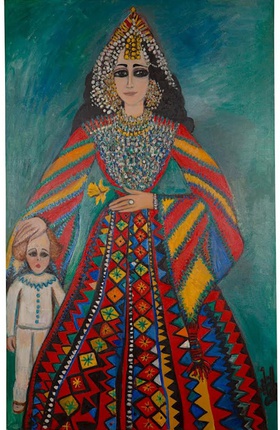Interviews
Cultivating Continuities
Suha Shoman in conversation with Amin Alsaden
Few are those who are artists and who have simultaneously established and run a public art institution. Few are those who have been interested in, supported, and collected contemporary Middle Eastern art since before the major shift in focus that occurred within the last decade. Suha Shoman, Founder and Chair of Darat al Funun – the Khalid Shoman Foundation in Amman, is one such exception. Since 1988, Darat al Funun has played a critical role in nurturing the art scene in the Arab world: an art centre known for its grassroots initiatives, sensitivity to local and regional issues, and support for emerging as well as established artists. Here, Suha Shoman, who trained as an artist, talks to Amin Alsaden about her current perspectives on the foundation, Arab art, and the world at large.
Amin Alsaden: Perhaps you always had a productive sort of restlessness, but from the relatively short exposure I have had to Darat al Funun, I sense you are re-evaluating many things right now. Could this be an anxiety about the idea that your project turns 30 next year?
Suha Shoman: There has always been a lingering anxiety, but it was amplified when we celebrated our 25th anniversary. You work on a project non-stop, and then you reach a point when you start evaluating and reflecting. All these new developments in the region, particularly all the new museums and private initiatives, are a very good thing – this openness, globalization, the general interest in art and support for artists. But at the same time, and no matter what we did here in Jordan, there remains this Orientalist idea – the fascination with Cairo's pyramids, the magic of Palestine, and Beirut as the Paris of the Middle East. For those interested in art from the region, Jordan is not on the map. Furthermore, our local artists with an international potential tend to leave the country. So you start asking yourself: what can a Jordan-based, self-funded institution contribute to this picture?
The second source of anxiety is ensuring continuity. Many institutions are the brainchild of one person, but they must be structured in order to ensure continuity beyond that person. I have been working for years on forming a qualified team to ensure that Darat al Funun carries on without me. Only then can I say that I have succeeded.
AA: Darat al Funun had a rather curious start. Would it be fair to say that it paralleled your own growth as an artist? That it was an education of sorts for you more than anyone else?
SS: It was an education but a challenge at the same time. I am an artist. I was not trained in museum studies, I am not an art historian and I do not claim to be a critic. The project emerged from specific circumstances. My husband was the deputy chairman for the Abdul Hameed Shoman Foundation, established in 1978 – one of the very first cultural foundations in the Arab world dedicated to the sciences and humanities, aside from the King Faisal Foundation in Saudi Arabia. So there was already an infrastructure. The Foundation started to organize exhibitions in 1987, and I naturally got involved. Along with my friend the Lebanese artist Emmanuel Guiragossian, who had taken refuge here from the civil war in Lebanon, we transformed the space where the Foundation held its talks into a white cube exhibition space, the first outside the Jordan National Gallery of Fine Arts.
AA: So the beginning was a fortuitous convergence of your career as an artist and the circumstances of being married into the Shoman family.
SS: Yes. The idea was initially to combine art shows within the space where the Abdul Hameed Foundation held its talks to diversify our audience. We started by presenting Jordanian artists, both established and young. Then we had an exhibition for Palestinian artists of the first Intifada, and the first exhibition of contemporary Iraqi artists in Jordan.
AA: When talking about Darat al Funun's beginnings earlier, I used the word 'curious' because I believe that Darat al Funun began while the Iraqi art scene was imploding as a result of the Gulf Wars and sanctions. You welcomed many Iraqi artists, providing them with a new venue for producing and exhibiting work, and through them you inadvertently injected energy and competition into the local scene in Amman.
SS: Life is full of accidents and coincidences. The art scenes in the 1960s and 1970s were very active, particularly in Iraq and Syria. But after 1988, there was no longer a place for Arab artists to meet in the region. The first five years laid the foundations for Darat al Funun. We learned by working with artists. It was a period of exploration, building knowledge and experience. I was able to understand the needs of the artists – they were asking for a specialized art library, workshops, and spaces to work, to exhibit, and to meet. This is why we decided to move a step further.
The Foundation was looking for a new space, but Amman did not have big halls to accommodate our activities. We were planning for an exhibition on the theme of the 'chair' – the idea of Iraqi artist Nedim Kufi. I thought we would do it outdoors. Architect Ammar Khammash took me to the small park in front of the National Gallery, but it was impossible to have the exhibition there. Then he showed me a house, also in the Jebel al Weibdeh area. When I came to Amman in 1974, I did not really know the city. But when I saw this site in 1992 – you should have seen the condition of the house, and the archaeological remains, abandoned for fifteen years – I felt the heart of the city. It was a coup de foudre. Thankfully, my husband, who supported me all the way in everything I did, gave me the green light; any sane person would have thought the idea was crazy. So we started restoring the house, founded Darat al Funun, and became independent from the Abdul Hameed Shoman Foundation's activities.
AA: I brought up the influence of Iraqis on the development of Darat al Funun to suggest that from the get-go, you were interested in operating regionally.
SS: I would say not just Iraqis, but Arab artists. We inaugurated Darat al Funun in 1993 with an exhibition of 50 contemporary Arab artists, along with artists from Jordan. It was a rotating exhibition that ran until 2002. The idea was to instill confidence and dialogue: emerging local artists can have their work shown next to established artists such as the Iraqi Shakir Hasan Al Said or the Syrian Marwan Kassab-Bachi. But when it came to estimating the market value of their work, our initiative was met with some resistance. When Fahrelnissa Zeid established her art school, I was one of her students. She opened her house to everyone, but she chose to work with women who were interested but not formally trained in art. In 1981, five years after opening her school, she organized a major exhibition of her own work along with her students' work. She faced resistance. It was the first time that King Hussein – she was his great aunt – opened an art exhibition, not to mention the fact that her students were all women, mostly middle to upper class. It was also because she taught in an unconventional manner: technique could be learned at any time, but her idea was to go beyond that and nurture imagination and creativity.
AA: But the resistance did not hold you back. The roster of Middle Eastern artists represented in your collection is extraordinary. Are there regional artists you were excited about, but might not have had a chance to bring to Amman?
SS: I liked the work of Egyptian artist Hamed Nada. I travelled to meet him and we agreed to organize an exhibition for his 70th birthday, but he happened to fall in his atelier, and he passed away. We could not bring his work to Amman after that. I also liked Inji Aflatoun's work from the prison years, the 'Black series'. I went to her, and a few months later, we agreed on an exhibition, but she also died. I then met Adam Henein in Paris. I bought some pieces from him, and I told him that I wanted to show his work in Amman. But I also told him about the last two incidents, and asked him whether he was willing to exhibit at Darat al Funun. As the saying goes, third one's a charm. We laughed it off, and that was the beginning of a close friendship.
AA: You seem to have also had a great relationship with Marwan Kassab-Bachi.
SS: I first saw Marwan's work at the Institut du Monde Arabe, I acquired some of his work from a gallery in Damascus, then organized his very first solo show in the Arab world. We became friends, and later on, we established the Darat al Funun Summer Academy, which he directed for four years, donating his time to teach for a whole month each year.
Perhaps the fact that I am an artist made a difference in how and why we collected. We did not create our collection in just five years, buying works from Sotheby's or other such commercial establishments. We were never an institution that looks for who is important or famous, but it was a relationship of appreciation, friendship, and support.
AA: Marwan's Summer School here is legendary, and seems to have produced several notable artists. Again, the scope was regional.
SS: Jordan and Palestine did not have art schools. When we did the Summer Academy with Marwan, 60 artists from the Arab world came and studied with him. In Palestine, I had a special relationship with the Khalil Sakakini Cultural Center that Adila Laïdi-Hanieh used to direct. Because I could not go to Palestine, Adila would select a group of artists, and I would make a final selection with Marwan. We tried to provide opportunities for Palestinians from Gaza, some of them had to travel through the Golan Heights in order to come to Amman. Those who were talented, and in whom Marwan saw potential, he asked to return every year. One of those who assisted him was Ali Kaaf, a Syrian; now he is well known. Another assistant was Salah Saouli, a Lebanese. The idea was to support Arab artists because I realized there was a need, and it was possible for us to contribute. Marwan approached teaching like Fahrelnissa: as a mentor, to have a student work, read, and develop his or her own approach. It was not about technique, but the mental process, about what a student wanted to express. Fahrelnissa studied under Roger Bissiere, who used to tell her: if you have a song to sing, or a story to tell, you have to do it to perfection.
AA: I understand that Mona Hatoum was another milestone of sorts. Did her arrival here usher in, or was it an indication of, your turn toward more experimental art forms?
SS: Mona Hatoum had a residency at Darat al Funun in 2008, produced new work, and had her first solo exhibition in the region. Her work was challenging, and during the talk she gave, somebody in the audience told her that her installations were not art. She responded. Our talks are meant to create productive exchanges.
After Marwan's Summer Academy, Ziad Dalloul also taught painting here. But it was following 2004 that we initiated workshops on video art, photography, and installations, all year round. We had artists like Amal Kenawy offer a workshop on video art, and photography with Sama Alshaibi for two consecutive years.
In addition to providing instruction in art, I was hoping to revive an atmosphere I had known in Paris at the Café Trottoirs – I was there in 1968, and it was a meeting place for artists, philosophers, and students. I think it was similar in Iraq to a certain extent. This was the idea behind creating the café here.
AA: So your project has evolved gradually. However, so much has changed since you started Darat al Funun. There are new collectors, museums, and art fairs in the Gulf, and cities like Beirut and Istanbul are emerging as important centres for art. Likewise, there is an unprecedented interest in modern and contemporary Middle Eastern art in the West.
SS: I think this interest in Arab art has to do with Iraq. The West waged war on Iraq, in 1991 then 2003. I could be wrong, but the physical presence of the US in Iraq created a general curiosity about Iraqi art and civilization, in order to understand this country. Also many Iraqi artists left and started living in other Arab countries, which also generated interest in Arab art. This was around the time that more initiatives started in the Gulf.
There was also a major shift around 2000, given various changes that were taking place, from the internet to new media. I usually do not exhibit at Darat al Funun, but I had an exhibition in 2004 in memory of my husband. I am a painter, but my work started shifting gradually. And perhaps the shift that was happening to me personally was reflected in Darat al Funun's activities. In 2002, and in Petra where I have my atelier, I took my camera and started filming fantastic scenes of light moving across the mountains, something I was trying to paint for many years. I worked for two years and did a series of seven videos and animations, and I screened them in 2004 at Darat al Funun. It was the first video art show in Amman. But people reacted by asking me: when are you going to start painting again?
At that time, Beirut enjoyed some political stability after the 15-year civil war. One of the ironic consequences of the Lebanese civil war was the fact that several artists like Walid Raad and Rayyane Tabet went to study abroad at a crucial time in their lives. They are international artists now, but they are still committed to a subject matter related to their own country's circumstances. So everything was changing, and art picked up here as well.
AA: And how do you evaluate the recent regional changes? Have they all been favourable changes?
SS: The changes around us are generally a good thing, provided the work is laid on a solid base. The work of Hoor Al-Qasimi, for example, is embedded in her home city of Sharjah. They established the Sharjah Art Foundation, support regional artists and collect their works, and they activated the [Sharjah] Biennial. Hoor came to Jordan and invited local artists like Abdul Hay Mosallam, organizing a solo show for him. No one knew him before, but then he was exhibited at the [Sharjah] Biennial, and his work ended up going to the New Museum's exhibition Here and Elsewhere. The same attention was accorded to Fahrelnissa, who went on to be exhibited at the Sharjah Biennial, and now will have a retrospective at the Tate Modern. All this interest started with our 25th anniversary exhibition Hiwar, curated by Adriano Pedrosa, in which he invited emerging artists from the Global South in residency at Darat al Funun, to exchange with each other, and to show works in dialogue with our collection, which includes Abdul Hay and Fahrelnissa.
AA: So you find the Sharjah model to be a positive one.
SS: A very positive one. They have teaching, they are part of the community, they have year-round activities, and they have the Biennial. They also operate regionally and internationally. We have been cooperating together. Sharjah, like us, grew over time. We added more spaces only when we identified a need. For example, we opened the Lab because we wanted to provide an experimental platform for emerging artists, and the Headquarters to provide a space for our fellows. Some others in the Arab world start by erecting an impressive building before the structure needed for the functioning of a proper art institution is in place.
AA: It sounds like, besides Sharjah, you are critical of developments in the rest of the Gulf.
SS: Having iconic museums like the Louvre or the Guggenheim there could open the region up to the global art world, but you have to first know your audience, define your aims and what is needed in the country before you implant enormous inaccessible buildings. Shouldn't they ask themselves: What is the right thing to do? It is good to have interest in art, but you have to build the infrastructure and create a community. Why buy a Cézanne for millions of dollars when you need to build schools and support local artists? You also have other issues, like the labour problem. I signed the petition calling for better working conditions. Now we also have the biggest tragedy in Syria, and the huge refugee problem, and we must raise our voices and focus on that problem too.
I respect Western civilization, and I have been trained in the West. At school, I used to know the map of France by heart. But we have to stop imitating the West. Some have this complex. We need to stop being Frantz Fanon's Wretched of the Earth. It is a given now that the West is not the only source of culture and art. We have our own history, our own civilization. One of the first to start looking at the rest of the world, not in terms of ethnicity, but the merits of cultural diversity, was André Malraux. I saw his Musée imaginaire when I was sixteen at the Sursock Museum in Beirut. The idea is to question who we are, which does not mean severing relations with the West. Our partnership with the Tate Modern for the exhibition Out of Place was not based on an interest in gaining recognition from an institution in the West. It was a real partnership with exchange and dialogue for both of us.
We have to stop thinking that we can only succeed by copying the West. I am inspired by all that brings knowledge and advancement, but we have to also know who we are and where we are going.
AA: Do you see Darat al Funun as a global institution today? Are you interested in more collaborations and exchanges beyond the region?
SS: You have seen our library. We have a whole shelf on Matisse, and from the very beginning we also had books on art from the Global South. We have to be open to the world and work together. The more partnerships, the more we can all advance.
This sounds old fashioned now, but my generation spoke of a message, of the idea of universalism of the human spirit, which was ever present in the teachings of Fahrelnissa, who recommended that we read Kandinsky's Concerning the Spiritual in Art. Add to that my life experiences, being in Paris in 1968, witnessing Vietnam's independence, and of Algeria. We all had these common aspirations, with no distinctions or borders. This is what we believed, but unfortunately it is failing these days.
AA: I am struck to hear you speak about the notion of universalism, and the importance of being open to others. We often criticize Western institutions that overlook modern and contemporary Middle Eastern art. Should we be equally critical of Darat al Funun for focusing exclusively on Arab art?
SS: I am proud of who we are as Arabs. I do not know Palestine: I grew up in Egypt, then Beirut, then went to Paris, and finally to Amman. I am attached to these countries. I studied in missionary schools. I lived in cosmopolitan cities. I hate xenophobic or sectarian attitudes. The way I see things changing these days is far from the way I think.
We started with Arab art because there was a need. Back in 1988, there was no interest or support for Arab artists. But we also recently had an exhibition of art from the 'periphery' – in this show, Hiwar, we included art from India, the Philippines, South America, and other countries from the Global South. I would love to invite Ai Weiwei; we already hosted Antoni Muntadas. But our priority is to commission regional artists, support them, or provide them with opportunities for training abroad – such as our exchange programmes with Modena, Pro Helvetia, or UNESCO-Aschberg Bursaries. When I ask Iraqi artists to come and give workshops and teach, they benefit, and we learn from them. Likewise, when Chris Dercon comes to lecture here, then works on a project to take Fahrelnissa to the Tate Modern, we work together, because we learn from being open to the world.
AA: Do I gather that your interest in Arab art has to do with its cultural relevance here?
SS: They say you start at home. When you see a need, you help, and build where you belong, without being closed to the world. Others do not need me – they have all the support they need.
AA: You celebrate, support, and collect Arab art. And yet, for me at least, this is not such a clear and definitive category. What does art produced in Dubai, for example, have to do with that of Cairo or Casablanca? How about all the Arab artists in the diaspora now?
SS: Do not start telling me that the people in Morocco are Amazigh, or the people in Lebanon are Phoenicians.
AA: But you have exhibited and collected artists who are not Arab, ethnically speaking. Himat Mohammed Ali is a Kurd. And I suspect that you have worked with some North Africans who are Amazigh.
SS: These ethnic distinctions are divisive. Some are redefining what is Arab these days. Why would Farid Belkahia make a large painting about Jerusalem? I do not want to argue semantics, but I do not agree with those who say that this is only about the Arab language, and that there is no such thing as the Arab nation.
AA: Does your interest in the 'Arab' denote the long and modern ideology articulated by several figures from George Antonius to Sati' Al-Husri, Gamal Abdel-Nasser to Michel Aflaq – the belief that there are not only cultural affinities in the region that go beyond language, but also that Arabs are meant to somehow unite?
SS: Why did everybody aspire to that? In this region, we have a common history, a common culture, and a common religion with tolerance toward minorities. We are linked whether we are Amazigh or Kurdish. Himat is the most Arab person I know. It has been a common dream since the seventh-century Arab empire, a region that was colonized and has been searching for its identity. Being Amazigh does not deny you being Arab as well. But our work is not only about Arabs. We should learn from others as well. We invited James Webb here, who is a South African, and he produced his piece, There is a Light that Never Goes Out, in Arabic, and we have it displayed on the facade of our Headquarters. If I am only thinking Arab, I would have instead put something about Palestine, for example. I do not just do Arab art.
Our region, the Fertile Crescent, or 'Bilad al-Sham', was known as the Near East. For political reasons, in the mid-twentieth century, the region was labeled the 'Middle East', adding new countries, and disregarding our history, differences, and cultural backgrounds. This does not mean that these countries do not relate closely to each other. However, this history meant that while the development of the European Union continued over time, the development of the Arab nation was hindered due to colonization.
AA: Do I hear in your words that there is a fundamentally subversive undertone in your approach, which rejects the aftermath of colonialism that divided this region?
SS: Of course. This is why we are celebrating Palestine this year. What the colonialists allowed themselves to do, to divide countries at their whim, and create countries here and there, simply because they have interests in the region like oil, killed the possibility of this nation developing. Iraq was created then, so was Jordan, and Israel. But look at Jordan, mostly a desert with no oil or agriculture. They promised Syria to King Faisal, but ended up dividing Syria along sectarian lines. They brought the seed of discontent. In the nineteenth century, these powers presented themselves as the beacon of civilization, and they wanted to bring civilization to our region. Who says that their civilization was the one and only? I appear to be passionate about this cause. I am a Palestinian. Till today, we are not even recognized as natives, while for the Aborigines, there was an apology. When will this oppression, this disrespect and disregard, end? We have to learn from our history and do better.
AA: Since you brought up Palestine, I want to ask you about this year's project, Palestine Al Hadarah (The Civilization of Palestine). It has resonated with my ongoing research about mid-twentieth century Baghdad, where I am trying to challenge the conventional idea that people's lives were determined by politics. But why Palestine, and why now?
SS: We are commemorating several anniversaries that make you stop and think with horror about what has happened. The Balfour Declaration was a catastrophe. British Prime Minister Teresa May wants to celebrate it with 'pride' this year. How could you allow yourself to give something that did not belong to you? How can you allow yourself to deny, a hundred years later, that there was an ethnic cleansing of the Palestinians? We still denounce the Holocaust – that was no doubt a horrible thing, and it should not ever happen again. But how can the people who suffered from this not understand how Palestinians feel, and pretend we do not exist? And how does the West, in the twenty-first century, still have this narrow-minded colonial view of what history is, and not have the courage – like South Africa's Truth and Justice Commission – to discuss and create tolerance and understanding?
Most of the work presented this year is from before the Balfour Declaration: what Palestinians have done in the fields of literature, music, art, cinema, and the press. The Khaldi Library, which opened in 1900, was an initiative that started from the 1720s, for example. We were not ignorant. This year, it is time to stop and tell the truth.
AA: What truth? And what is the point of all this?
SS: The history, what happened; challenging this notion that Palestinians did not exist, or that everything started with the arrival of the Europeans. We have some contemporary artists this year, like Khaled Hourani who speaks about the refugees, a problem that cannot be solved until you solve the political problem behind it. But most of what we are presenting has to do with history. The first library; the first female photographer, Karimeh Abbud; the first press – I told you about how Einstein wrote a letter to the editor in 1930; the first cinema; the first female artist, Zulfa Sa'di, who was awarded the first prize in the Palestine Pavilion at the 1933 First National Arab Art Fair in Jerusalem; Nicolas Saig, who started with religious art, and then moved to representing nature, and who taught other artists.
Jumana Abboud, a contemporary artist, will present the tales that used to be told about the old wells in Palestine. The point is to show that there is a culture, and to get people to know what Palestine is. There was a civilization there, whether you call it Canaanite, Palestinian, or Arab, and this civilization included Jews, Christians, and Muslims. Palestine is not merely a strategically located crossroads that we grab and abuse; it has a culture and people who lived there before colonization. People do not know this past, and do not know the present.
AA: The three dates commemorated by Darat al Funun this year – 1917, 1947, and 1967 – make the project, to my mind, inherently political, almost propagandistic in fact, because these dates denote historical points of contention.
SS: It is political. You cannot separate art from politics. Artists are witnesses of their time. Zulfa Sa'di painted leaders of her time, thus art and politics. It would have been purely about politics if I had only included contemporary artists who represent certain events like the Intifada. But it is primarily a historical project.
AA: Historical and topical. This seemingly irresolvable conflict constantly provides material for an art world that thrives on shock value and revolutionary novelty. This is not only true for artists from Palestine or the region; someone like Banksy comes to mind, who just opened his Walled Off Hotel, and whose viral wall graffiti calls for peace or normalcy. But you are not necessarily interested in highlighting the conflict.
SS: I present things to allow people to think and decide for themselves. Other institutions will have more specific events about the conflict. For the 100th anniversary of the Arab Revolt last year, we highlighted the poet Fuad Al Khatib, who lived here in the Dar Khalid building, but no one knew about him. At the end of this year, we are screening a film by Edward Said, and a lecture by historian Walid Khalidi, two great Palestinian thinkers.
AA: And the inclusion of these thinkers, particularly Said's work on the relationship between the Occident and Orient, all of a sudden universalizes the Palestinian issue?
SS: Not all of a sudden. The Palestinian tragedy is at the core of what is happening in the whole region. Look at what has happened to Iraq, Syria, or Lebanon; and now the notion of having a Palestinian state or recognition is disappearing.
AA: And that is part of the reason you are commemorating this year's anniversaries, because you feel the Palestinian issue is being forgotten?
SS: My recent artworks have been about reminding people about the Palestinian issue, because the world is so concerned about Syria, Iraq, and the refugees, it has forgotten about finding a solution for Palestine. We have to question everything – this is our role. Artists in America have been protesting Trump. Others have criticized the actions of the US government in Iraq, such as Jenny Holzer or Fernando Botero. You cannot separate yourself from events. Art is not a luxury, it is about life.
AA: Is Darat al Funun simply an alibi to promote a larger cultural project, or are we to understand that all of these things – such as archaeology, costumes, newspapers, pioneer cultural figures – are crucial for understanding Palestinian art?
SS: Not necessarily Palestinian art, but civilization. All these things are related. You cannot just do pure art. Art is part of other forms of self-expression. I do not like the word 'culture', but culture is poetry, cinema, everything creative, including the visual arts. From the beginning, our inaugural event involved tenor Tania Nasser singing poetry by Jabra Ibrahim Jabra, piano composed by Agnes Bashir, classical Western music, and modern ballet. This has set up the tone for what we do – all forms of art in harmony
AA: But surely, you are aware that these aspects are also the classic ingredients of what Benedict Anderson called an 'imagined community'. In other words, they are the ingredients of a nation. But you are describing the facets of a nation without a state that articulates and promotes these aspects – you are describing the heritage of a people, the majority of whom have been displaced.
SS: Yes, but this does not mean that it is an invented community. It did exist, and it continues to exist. The works we are presenting show you how Palestinians continued their aspiration for freedom and independence, but because of the greed of the colonialists, that did not materialize.
AA: So not necessarily the idea of a nation, but the idea of a culture.
SS: No, a nation as well. A culture is the cornerstone of a nation. It is about people struggling for independence, justice, and their rights.
AA: Aside from politics, this year's programme is impressive. Imagine having all these shows in one place. You might have inadvertently created a museum of Palestine.
SS: Thank you. I am very proud of this work, because unfortunately very few are doing it. Similarly, for our 30th anniversary we are planning a museum at the Beit al Beiruti building, one that is related to the history of Jordan as it is told by the historical houses of Darat al Funun. It will be a dynamic, interactive museum. It will be a museum of Bilad al-Sham. We are all connected, one unit.
Darat al Funun symbolizes who we are and where we are going. It tells our history. We have the Roman and Byzantine antiquities reflecting ancient times, buildings from the time of political independence, and today, we are a home for contemporary art.
AA: But since you created a sort of Palestine museum this year, and you seem to be one of the few people capable of pulling that off, are there any intentions to collaborate with the new but famously empty Palestinian Museum in Birzeit?
SS: If they had asked me, yes I would, but they did not.
AA: I want to zoom out a little bit, and connect the Palestinian project to your interest in Arab art. Many theorists, particularly following World War II, from Theodor Adorno to Jacques Ranciere more recently, have spoken about the relationship between aesthetics and the political. But is this binary particularly pronounced with Arab and Palestinian art? Do you think that contemporary Arab art is condemned to perpetually address the political?
SS: When you have Dia Azzawi, an Iraqi, who did a work commemorating Sabra and Shatila, it shows you that we are all connected. Are we condemned? I would not say that. I personally did not start doing political art. My Petra series was about life, death, and loss, which relates indirectly to Palestine. But then I was forced to come to politics in my film Bayaratina, which was about my grandfather's orange plantation in Gaza that he started in 1929, but that was totally destroyed by Israeli forces between 2002 and 2008. We are living at a time when we must stop and act. Look at the work of Emily Jacir. Or of Mona Hatoum – it is universal, but it relates to her Palestinian origins as well.
AA: But if Arab art did not constantly address social or political issues, there could be an art of a completely different nature: one invested in autonomous artistic concerns, like the rest of the world has the liberty to do.
SS: But the rest of the world is also doing politics. Today, we have to ask ourselves where art is going, with all these installations and new media. Should we consider the work of Chris Ofili, the Turner Prize winner who uses elephant dung, as art? Is that enough? And why should we say no to politics?
AA: From previous conversations though, we both suspect that some artists might simply ride the wave because they see this as the most plausible trajectory toward globalism. That is, your passport to the global art scene is through a sort of self-Orientalism. How do you distinguish between those who genuinely want to express something related to their experience or struggles, and those who take advantage of this as a trend?
SS: This is the problem, and one of the negative outcomes of globalization. I do not want to use these terms, but you are either a true and genuine artist and art is part of your life, or not. At the end, there will only remain the few names that make a difference.
AA: I want to return to the local context, and consider the influence of geopolitics on art here. You have been working on building an audience for decades. But with the disappearance of the middle class here and elsewhere, and the unending supply of regional calamities (refugees, wars, and so on), art seems even more of an elitist folly. How and where does it fit in the region today?
SS: It is not elitist, and this is what we are trying to convey here at Darat al Funun. You should have seen the opening of our exhibition Do it, which was a collaboration with the Sharjah Art Foundation. You should have seen the youth who participated. We are located right in the heart of the city, open to everyone. These days, the middle or upper middle class may have other interests, but we work with and for the youth.
AA: How about the profusion of various artistic media, forms, and practices, something that Darat al Funun has been adamant on channelling in recent years? This obviously corresponds to the global blurring of the distinctions between art and the everyday. But has that liberated art within this context, or hurt its reception?
SS: It is our role to show contemporary art. The audience varies, and some might have not responded to new art forms. But our shows have opened new horizons for the youth, many of whom have started working with these new media, such as photography and video. But various people still come for different reasons: some to remember the old Amman in our setting, some for the archaeology or architecture, some for the café. This is one of the strengths of Darat al Funun – it is about more than just art. We are part of the community.
AA: Sticking with the idea of reception, but perhaps a global one, how do you feel about the 'discovery' of your mentor Fahrelnissa Zeid, someone who might not have been taken seriously when she was painting around the mid-twentieth century because she was perceived as this exotic Oriental princess. Do you think she is being exoticized now for a different reason, as a pioneer female Middle Eastern artist?
SS: No. Go back to history. She was part of the movement of the new school of Paris in the 1950s, and she participated in the very first exhibitions at the Colette Allendy Gallery and the Salon des Réalités Nouvelles. It was a time of change, and she was part of that. She was placed out of history because she was a female, like most of the women of that time. Second, she was not French. Third, she was a Muslim, and she was a princess. You can name so many female artists from all over the world who were taken out of history, but now there is a revival. Sonia Delaunay got to be known after the death of her husband. We know the struggles of Frida Kahlo, and Vieira da Silva, and many others.
AA: So this is only a late, but fair, reassessment?
SS: Yes, there is a revival these days. Saloua Raouda Choucair recently had a retrospective at Tate Modern. Part of the reason Fahrelnissa is at the Tate now has to do with what we talked about, this general interest in Arab art. She is not Arab, she was Turkish, but she has these connections to the region. I owe her a great debt, which is part of the reason her portraits have been displayed here at the Dar Khalid building since our 25th anniversary. After the Sharjah Biennial, her work went to the Istanbul Biennial, and it is now heading to the Tate Modern. Her work has been reconsidered in different contexts: as a Turkish-Jordanian, who had her origins in the Ottoman period, with Western training, and open to the world. So to present her today is not out of an Orientalist impulse, but because of this interest in women artists and their contribution to modern art.
AA: Speaking of discoveries and the creation of new knowledge, I want to thank you for the opportunity to do research in Amman. What were your ambitions behind this fellowship?
SS: This was not necessarily about ambition, but again, about a need. Darat al Funun has always been an artist-driven project. I am an artist, and I wanted to create a collective: a community where artists can meet each other, to have both practice and theory in one place. From 1988 onward, the vision has been the same. We are an oasis of research, of production, of dialogue; we have had a programme of residencies since 1995, and now a 30-year archive. We are a pioneering institution in the region.
This is how the project with Shakir Hasan Al Said came about. For two years, from 1990 to 1992, there were a series of talks, and we ended up publishing the book Hiwar Al-Fann Al-Tashkili as a compendium of these talks. The objective was to benefit from Al Said's knowledge and experience, and to try and identify people who can talk and write about art, because we knew from the beginning that there were no studies on Arab art. This was also the case with our book Arab Art Histories, which was not intended to be a catalogue of our collection, but a contribution to scholarship. This is also why, in 2011, we established the fellowship to support academic studies of Arab art. Histories of art discuss modernism everywhere, from Europe to Africa, but no one writes about Arab art.
AA: What dimensions of modern and contemporary Arab art are we missing the most, and which do you believe need urgent scholarship?
SS: We need research on Arab art from the very beginning. We need more scholarship, period. One of the things that interest me personally is the influence of Islamic art on abstraction in the West. We have this great heritage of Islamic art, which brought abstraction to the eyes of the West. If you look at the work of Mondrian before the famous 1910 Munich exhibition on Islamic art, and then you see it in 1912, you will notice the appearance of geometric patterns. This is just an observation to be considered and investigated. We always had relationships with the rest of the world, so we must examine influences with an open mind. In any case, there is a general need for scholarship, and that is why we support it.
AA: Your activities have been wide-ranging, and your support for art is admirable. Has your devotion to Darat al Funun taken a toll on your career as an artist?
SS: Of course. My work takes time, and I need solitude and concentration. My film I Am Everywhere is only eight minutes, but it took me eight months to prepare.
AA: I consider myself fortunate to have seen your early paintings, and the remarkable Petra series. Could we say that you still approach art as a painter even though you have explored other media?
SS: Definitely, with the eyes of a painter. If you look at my films, you will see that instead of painting with a brush, I am painting with the camera. The angles I take, I take them as if I am painting.
AA: What are your own remaining ambitions as an artist? Where do you see your body of work going next?
SS: I have not been able to produce for the last three years, because of all my responsibilities here, and because I am trying to institutionalize Darat al Funun. I have been preparing for the Palestine programme for a year now. I wear two hats, and this kills me. I need to work, I need to produce art, I need to be alone and focus. But that takes time. These days, however, are also extremely important, and I am trying to keep Darat al Funun up-to-date with everything that is happening around the world. But my main concern right now is to ensure the continuity at Darat al Funun, and then to be left alone.
AA: I am curious about the issue of continuity in regards to the operations and future of Darat al Funun. How do you see that unfolding over the coming few years, and what is the ideal case scenario? How do you plan to weather the inevitable unpredictability of the region's geopolitics, not to mention that of the art world?
SS: Darat al Funun has always been about a group of people working together. I wanted to create a community of people who have a sense of ownership of the place, who want to accomplish things and make a difference.
We already have a board of trustees, myself, and my son and daughter. My aim now is to collaborate with people and institutions that we have been working with all these years, to identify a common strategy for the future.
AA: And this collaboration with other institutions will help with the day-to-day operations of Darat al Funun, so you can find time again for your art?
SS: Not necessarily. I have a team, with each person having specific responsibilities. The collaboration is about common vision, common projects, and common challenges we all face. I assure you that we are working on a long-term solution, but I am reluctant to say more at this point because it is a work in progress. It is not easy to institutionalize and ensure the continuity of a private art centre in the region, but we are adamant on finding a solution.
AA: As we conclude, I have another question about the future. You have founded this incredible institution, and were behind its many exhibitions, acquisitions, and various cultural events; and yet you made sure that the late Khalid Shoman's name has been immortalized with Darat al Funun's name. How will we celebrate and preserve the legacy of Suha Shoman moving forward?
SS: This is your problem. Khalid Shoman supported me with my art and Darat al Funun. He was with me, behind me, and ahead of me, all my life. He passed away too soon. I felt that the least I could do is memorialize him, because of both his position and respect for my work.
AA: But you are the engine of this whole project.
SS: Look, this is a tribute not only to Khalid, but also to Jordan. Darat al Funun became my home. You can only succeed if you do things out of love, not out of a desire for recognition. I did not discover anything extraordinary, I just did things as they came to me naturally.
AA: This is very humble of you. However, I feel this exacerbates the same problem that led to overlooking Fahrelnissa for the longest time. Patriarchy aside, do some women, by being so caring and generous, risk effacing their own accomplishments?
SS: No. That was about society, and society did not recognize women back then. And this should not be about me, but about the institution. I said it is your problem because documenting my contributions is the responsibility of people like yourself who saw and believed in what I have done. Recognition or not, I did what I had to do, and I did it with all my heart. Fahrelnissa used to tell me one thing: you eat the fruit and throw the seeds, some will grow in a fertile land, and some will grow in a desert. I hope my seeds will not grow in a desert.
Suha Shoman is a Jerusalem-born, Amman-based artist, whose widely-exhibited work in painting and video installation explores issues of memory, exile, identity, and politics through a personal lens that reflects collective experiences. In addition to degrees in law from Beirut and Paris, Shoman studied at the Institute of Fine Arts established by Fahrelnissa Zeid in Amman. Shoman is the Founder and Chair of Darat al Funun, the Khalid Shoman Foundation, Amman, a home for Arab art and artists.

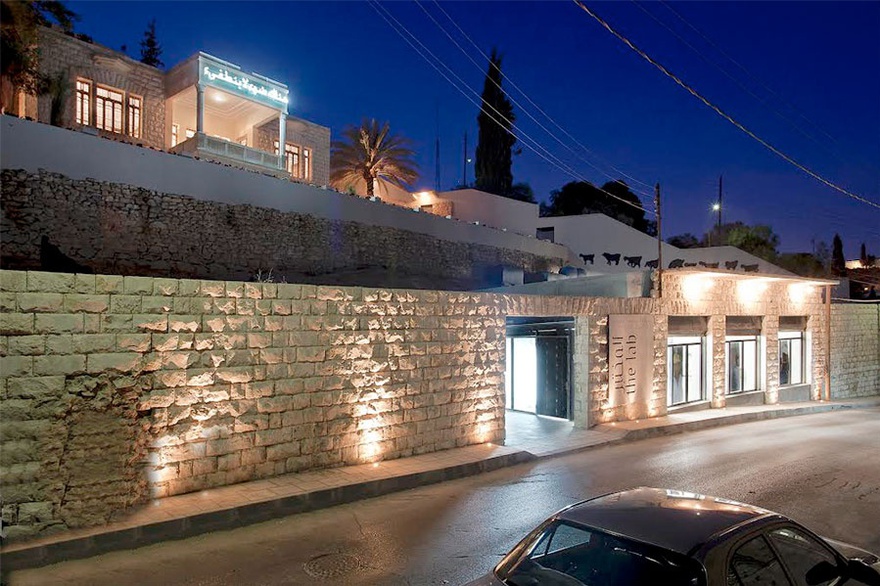
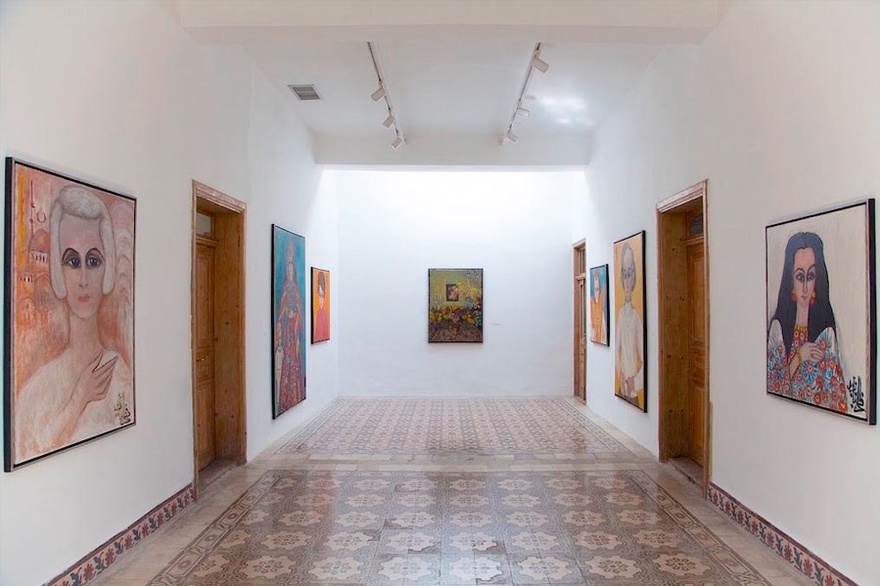
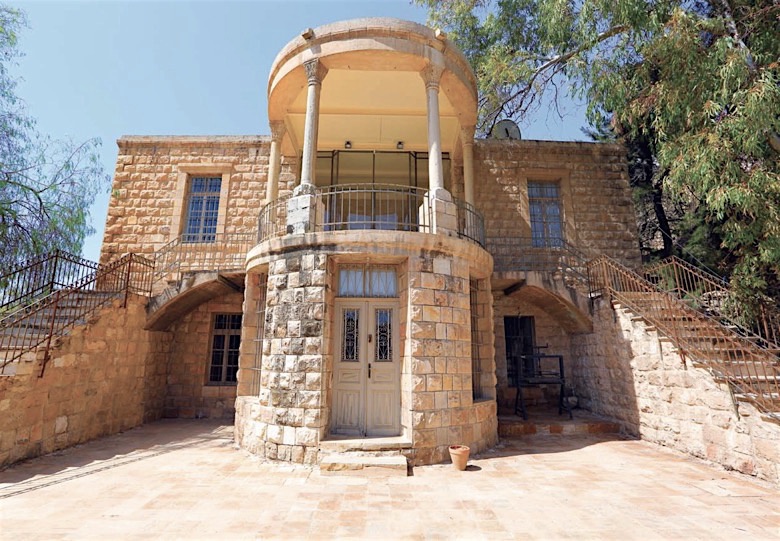
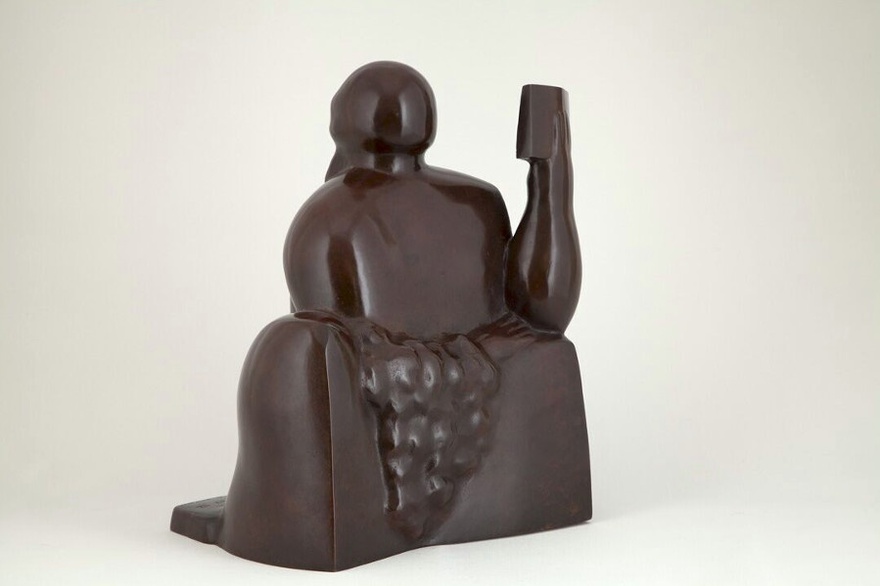
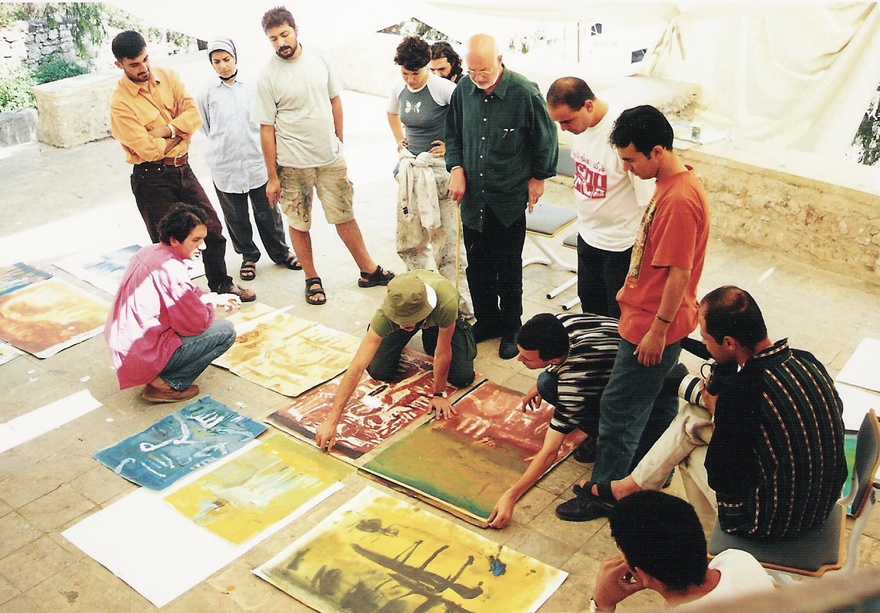
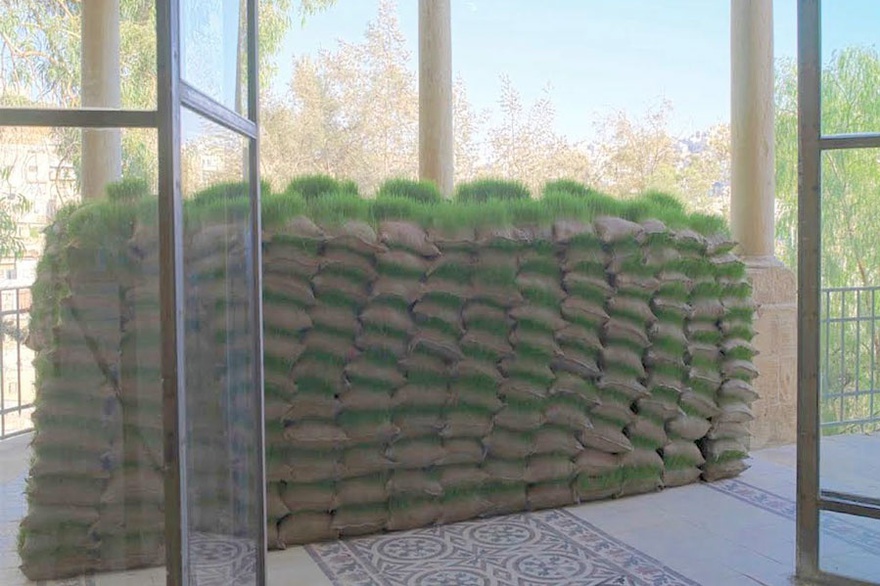
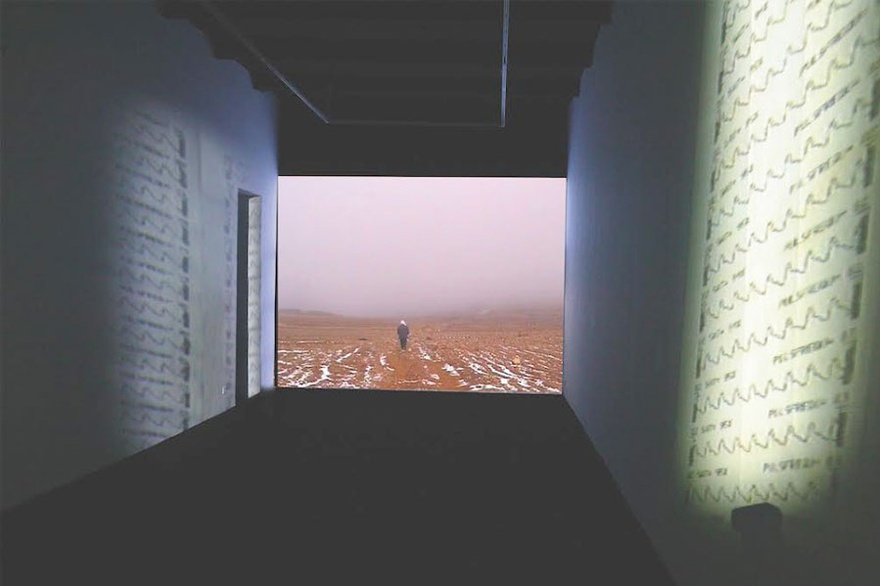
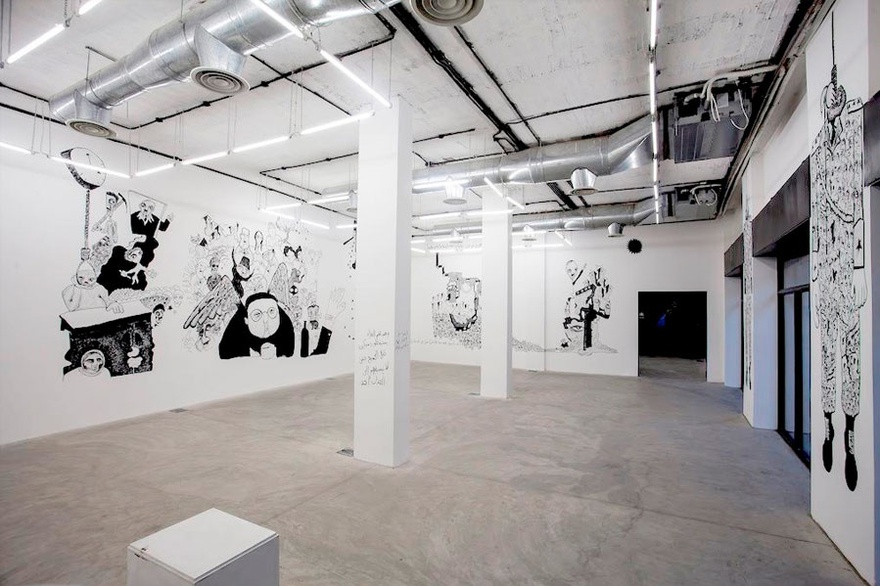
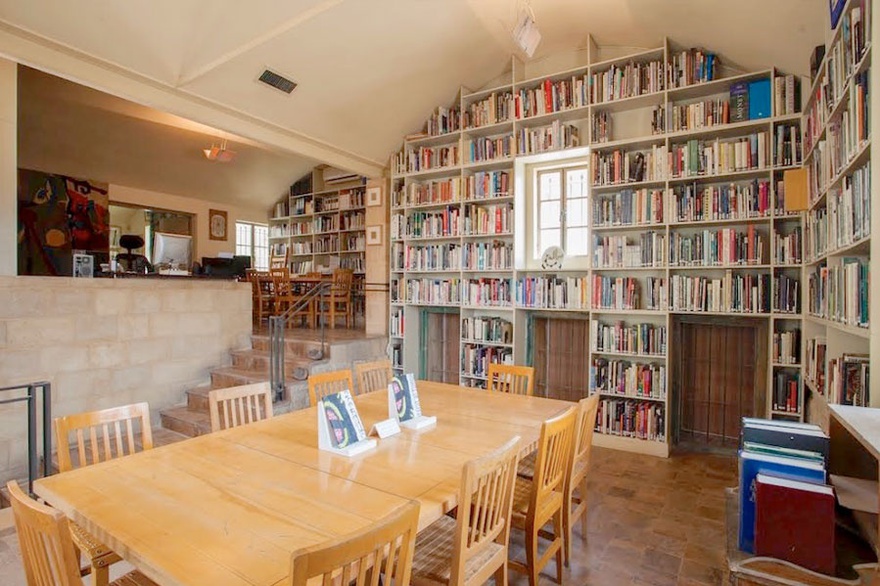
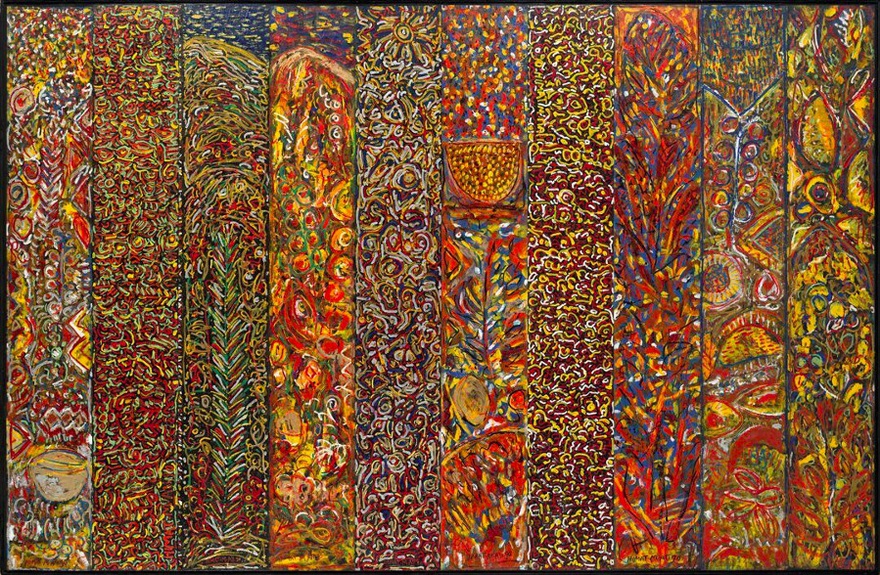
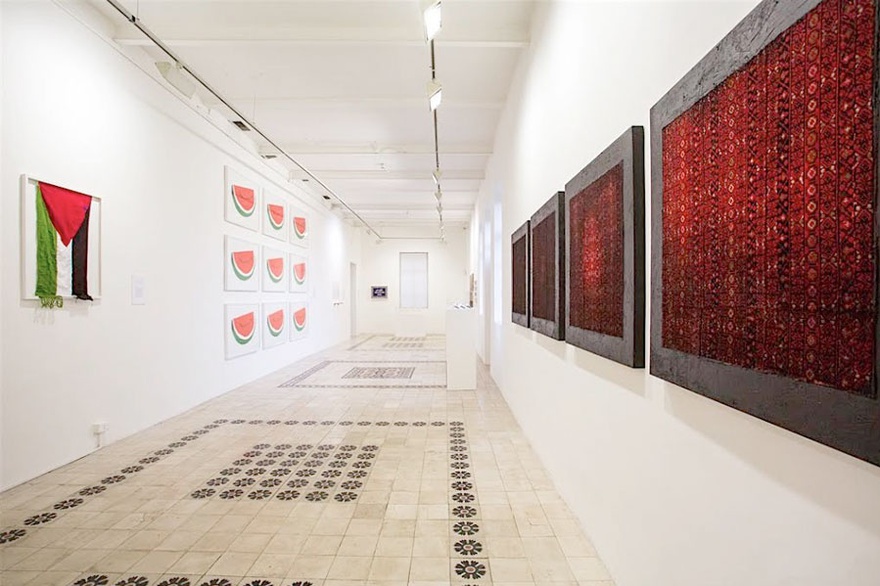
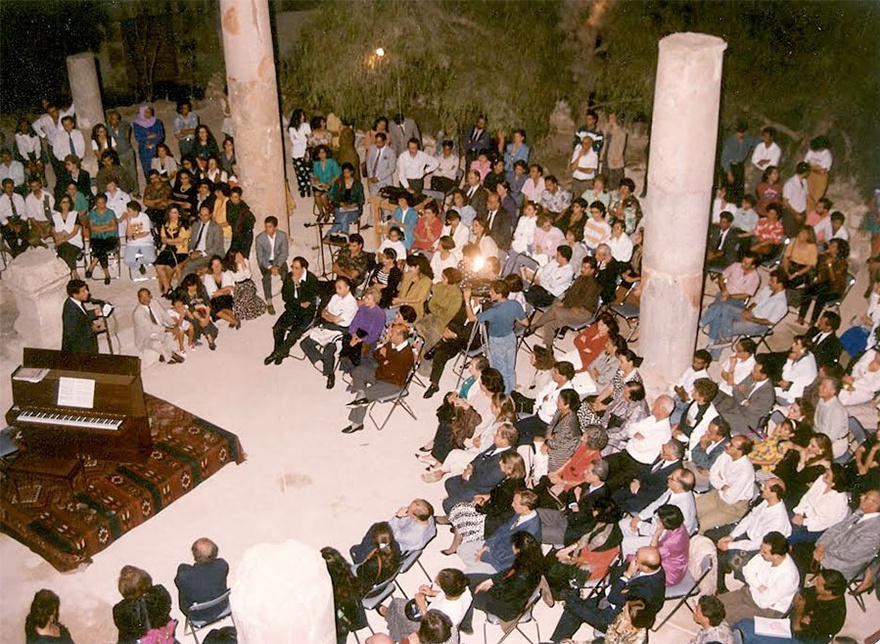
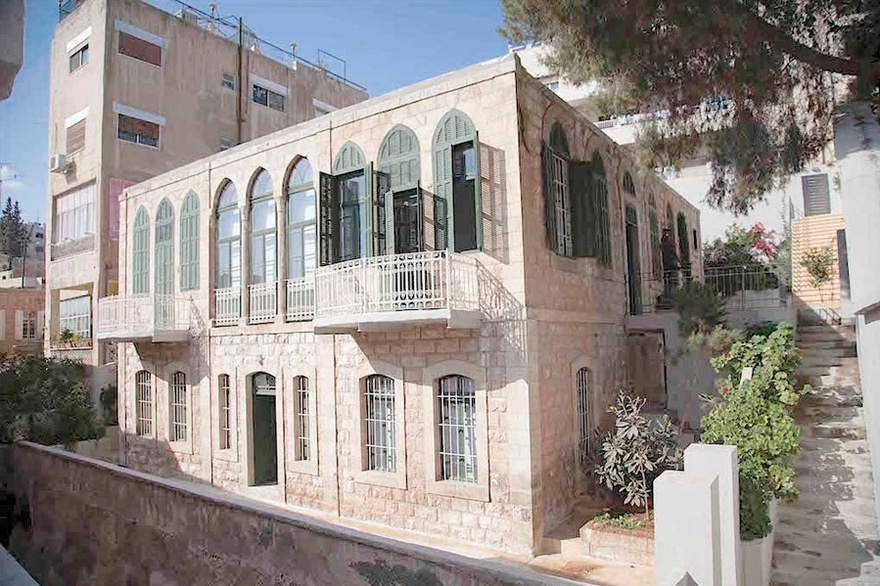
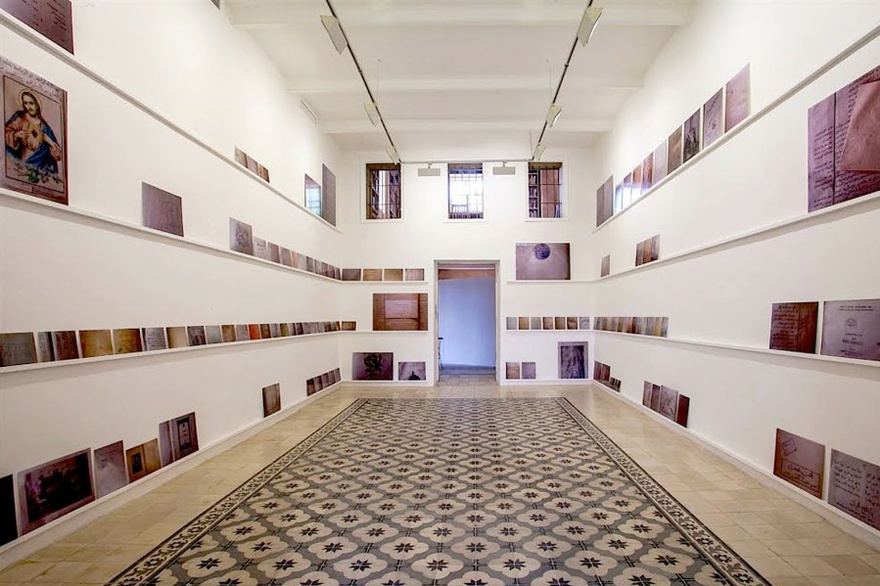
![Two of many Darat al Funun publications: Hiwar Al-Fann Al-Tashkili [Dialogues on Art], 1995, and Arab Art Histories, 2013.](/custom_images/880x/usr/library/images/main/iv_apr17_alsaden_9.jpg)
